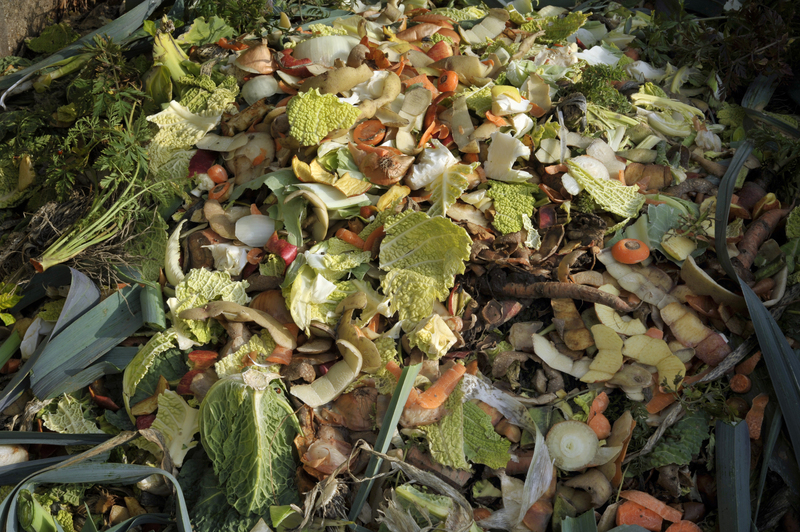Transforming Your Home: Top Eco-Friendly Tips
In today's world, where environmental concerns are at an all-time high, transitioning to an eco-friendly home is not just a trend but a necessity. Adopting sustainable practices not only helps reduce your carbon footprint but can also lead to significant savings on energy bills and contribute to a healthier living environment. Below, you will find comprehensive tips on how to transform your home into an eco-friendly sanctuary.
Energy Efficiency: A Foundation for Eco-Friendly Living
One of the key aspects of transforming your home is improving energy efficiency. Here are several strategies to consider:
1. Upgrade to Energy-Efficient Appliances
Appliances are one of the major sources of energy consumption in the household. Investing in Energy Star-certified appliances can drastically reduce your energy usage. These appliances use less energy to perform the same tasks, thus lowering your utility bills.
2. Install Smart Thermostats
Smart thermostats are an excellent investment for an eco-friendly home. They allow you to monitor and adjust the temperature remotely, ensuring that energy is not wasted when you're away from home. Over time, the system can learn your preferences and make automatic adjustments to optimize energy use.
3. Insulate Your Home
Proper insulation is crucial to maintaining a consistent temperature in your home. Sealing gaps in areas such as windows, doors, and attics minimizes heat loss during winter and keeps the house cool in summer. This step is pivotal in reducing the need for excessive heating or cooling.
4. Utilize LED Lighting
Switching to LED bulbs is a simple yet effective way to conserve energy. They use up to 80% less energy than traditional incandescent bulbs and have a longer lifespan, saving you money on replacements over time.

Water Conservation: Preserve This Precious Resource
1. Install Low-Flow Fixtures
Low-flow water fixtures, such as taps, showerheads, and toilets, significantly reduce water usage without compromising performance. These fixtures can cut water consumption by up to 50%, which not only benefits the environment but also reduces your water bills.
2. Harvest Rainwater
Consider setting up a rainwater harvesting system. Capturing rainwater allows you to use it for various non-potable purposes such as watering lawns, gardens, and even flushing toilets, minimizing the use of municipal water.
3. Fix Leaks Promptly
Leaky faucets and pipes can waste an astonishing amount of water. Regularly checking and fixing leaks can save both water and money. Also, upgrading to newer fittings often provides better sealing capacity.
Sustainable Materials: Choose Eco-Friendly Options
1. Opt for Recycled or Reclaimed Materials
Using recycled or reclaimed materials in home improvement projects reduces the demand for new resources. Materials like wood, glass, and metal can be reused, adding a unique aesthetic to your home while supporting sustainable practices.
2. Eco-Friendly Flooring Options
Consider installing eco-friendly flooring such as bamboo, cork, or reclaimed wood. These materials are sustainable because they are rapidly renewable or recycled, and their manufacturing process does less harm to the environment.
3. Use Non-Toxic Paints
Conventional paints often contain volatile organic compounds (VOCs) that release toxins into the air. Choose low-VOC or no-VOC paints to improve indoor air quality and create a healthier living space.
Waste Reduction: A Sustainable Approach
1. Compost Organic Waste
Composting is an effective way to recycle organic waste such as food scraps and yard waste. It not only reduces the amount of waste sent to landfills but also creates nutrient-rich soil for gardening.
2. Recycle and Reuse
Set up an efficient recycling system in your home to ensure that materials like paper, plastic, glass, and metal are properly sorted and recycled. Additionally, explore creative ways to reuse items that might otherwise be discarded.
3. Minimize Single-Use Products
Single-use products often end up in landfills contributing to environmental degradation. Opt for reusable items like water bottles, cloth bags, and containers to minimize waste production.

Incorporate Nature: Bring the Outside In
1. Indoor Plants for Improved Air Quality
Incorporating indoor plants not only beautifies your home but also improves air quality by absorbing pollutants and releasing oxygen. Species such as spider plants, ferns, and snake plants are known for their air-purifying abilities.
2. Create a Green Wall
A green wall or vertical garden can save space while adding lush beauty to your home. It enhances the air quality and can even contribute to better insulation for your building.
3. Encourage Natural Light
Maximize the use of natural light by rearranging interiors to reduce reliance on artificial lighting during daytime. Utilizing large windows, skylights, and using light-colored paints can improve the light flow throughout your home.
The Long-Term Benefits of an Eco-Friendly Home
Making these changes not only contributes to environmental conservation but also offers long-term financial benefits. An eco-friendly home is generally more energy-efficient, resulting in lower utility costs. Moreover, such homes often have a higher property value and appeal in the market.
By implementing these strategies, you can transform your living space into an eco-friendly home that aligns with sustainable living principles. The positive impact on the environment and quality of life is well worth the effort, making your home a haven of health and sustainability.
- Reduce energy bills by using efficient appliances and managing resources wisely.
- Enhance indoor air quality with non-toxic materials and indoor greenery.
- Take advantage of natural resources like sunlight and rainwater to minimize dependency on non-renewable resources.
By embracing these eco-friendly tips, you're not just making improvements to your home--you're contributing to a healthier planet for future generations. Start today and make a significant difference!